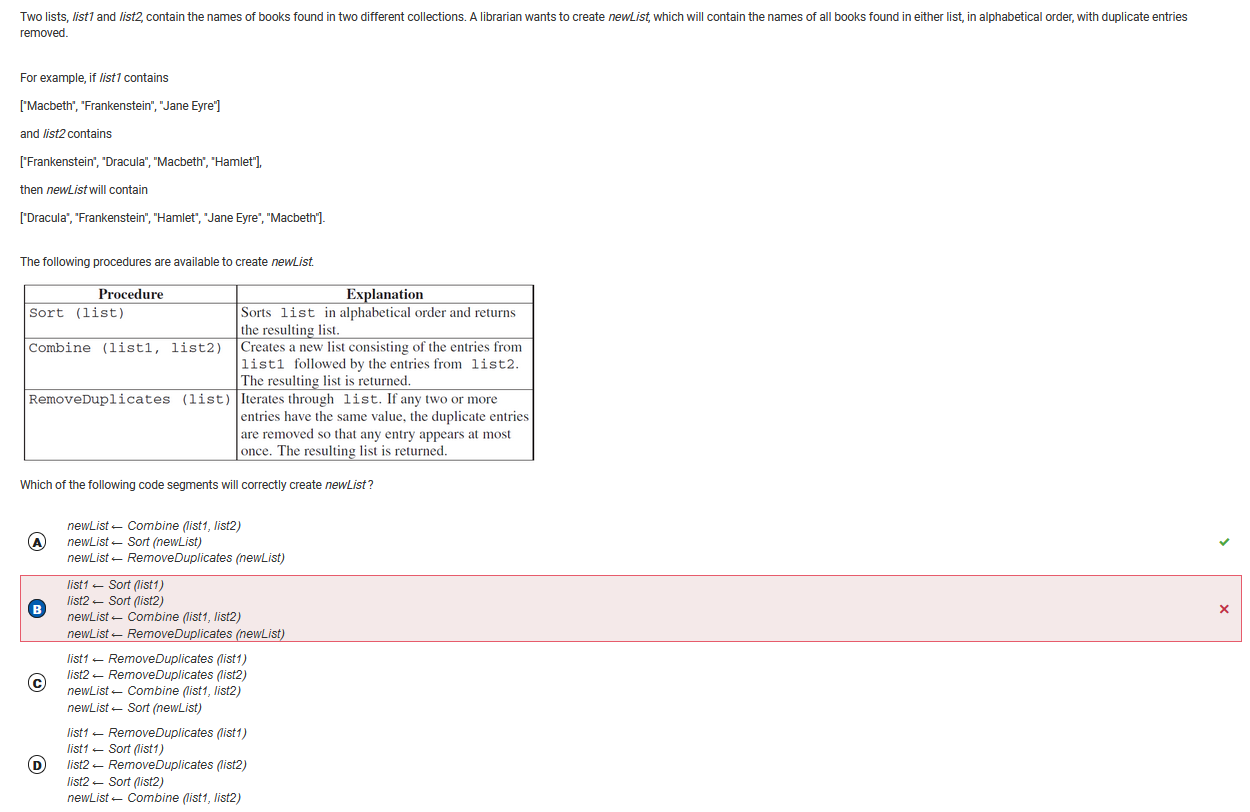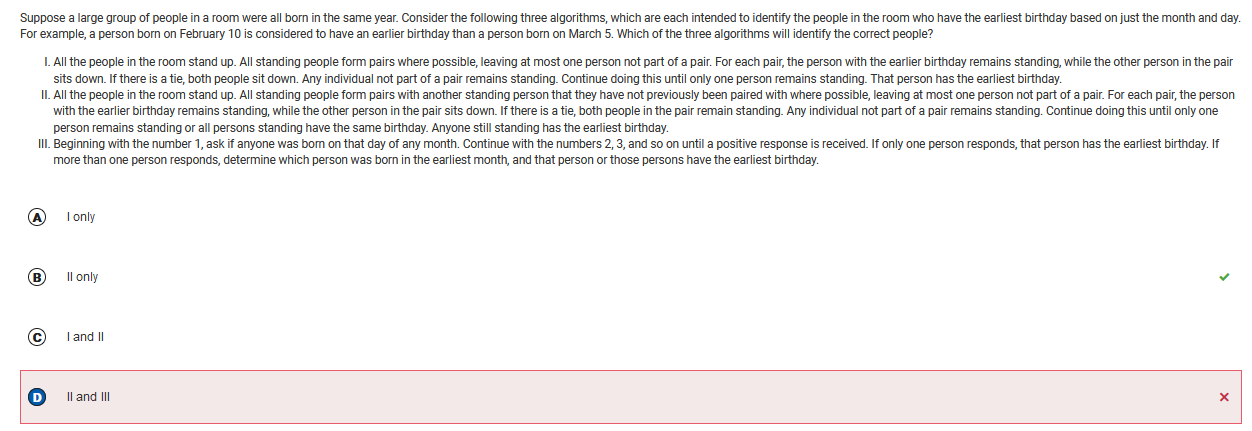Big idea 4 Quiz Corrections
Q 1
 Incorrect Answer: 70 Seconds
Correct Answer: 80 Seconds
Explanation: I did not correctly read that each process can only be ran on one processor at a time. Thus I simply summed the values and divided by two instead of finding the smallest combination of two process that can execute in more time than a third process.
Incorrect Answer: 70 Seconds
Correct Answer: 80 Seconds
Explanation: I did not correctly read that each process can only be ran on one processor at a time. Thus I simply summed the values and divided by two instead of finding the smallest combination of two process that can execute in more time than a third process.
Q 11
 Incorrect Answer: B
Correct Answer: A
Explanation: I misread option A and believed that no listed process followed the path of
Incorrect Answer: B
Correct Answer: A
Explanation: I misread option A and believed that no listed process followed the path of Combine -> Sort -> Remove Duplicates.
Q 12
 Incorrect Answer: D
Correct Answer: B
Explanation: I did not take into account the extra space that would be needed to store a larger data set. I also imagined that more code statments would lead to a larger performance impact.
Incorrect Answer: D
Correct Answer: B
Explanation: I did not take into account the extra space that would be needed to store a larger data set. I also imagined that more code statments would lead to a larger performance impact.
Q 37
 Incorrect Answer: D
Correct Answer: B
Explanation: I forgot that n^2 is considered a reasonable execution count given that some code runs at n! executions.
Incorrect Answer: D
Correct Answer: B
Explanation: I forgot that n^2 is considered a reasonable execution count given that some code runs at n! executions.
Q 41
 Incorrect Answer: A
Correct Answer: C
Explanation: It is more useful to know which row a negative is than knowing that there is a negative in a column.
Incorrect Answer: A
Correct Answer: C
Explanation: It is more useful to know which row a negative is than knowing that there is a negative in a column.
Q 43
 Incorrect Answer: A
Correct Answer: B
Explanation: Procedural abstraction makes code easier to read at the expense of a small amount of processing time due to the creation of functions.
Incorrect Answer: A
Correct Answer: B
Explanation: Procedural abstraction makes code easier to read at the expense of a small amount of processing time due to the creation of functions.
Q 47
 Incorrect Answer: A
Correct Answer: B
Explanation: I made a simple miscalculation that led me to believe that 15 would have been much too far from the highest indexed value, which would have made 10 technically the closet answer.
Incorrect Answer: A
Correct Answer: B
Explanation: I made a simple miscalculation that led me to believe that 15 would have been much too far from the highest indexed value, which would have made 10 technically the closet answer.
Q 49
 Incorrect Answer: B
Correct Answer: A
Explanation: This code segment traverses the entire list and compares all elements in the list to the first element. This includes comparing the first element to itself which will always evaluate to true; however, the first element in the list does not represent a student’s score.
Incorrect Answer: B
Correct Answer: A
Explanation: This code segment traverses the entire list and compares all elements in the list to the first element. This includes comparing the first element to itself which will always evaluate to true; however, the first element in the list does not represent a student’s score.
Q 50
 Incorrect Answer: D
Correct Answer: B
Explanation: Algorithm III does not work correctly. Algorithm III chooses the person(s) with the earliest day, disregarding the month. For example, algorithm III will incorrectly determine that a person born on February 1 has an earlier birthday than a person born on January 5.
Incorrect Answer: D
Correct Answer: B
Explanation: Algorithm III does not work correctly. Algorithm III chooses the person(s) with the earliest day, disregarding the month. For example, algorithm III will incorrectly determine that a person born on February 1 has an earlier birthday than a person born on January 5.